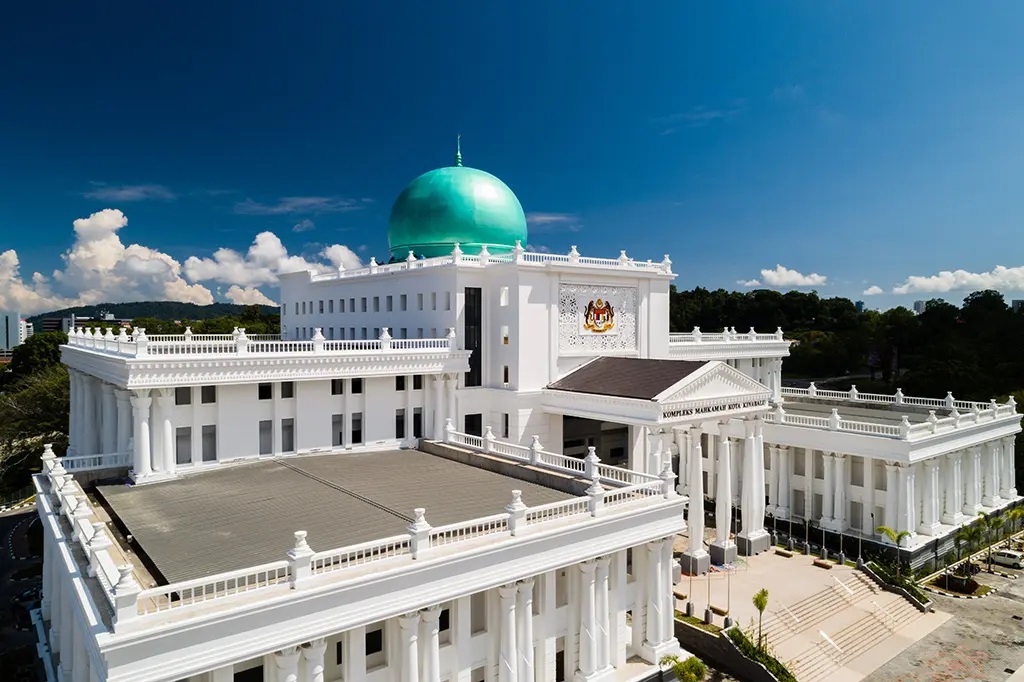
Dr Soh (left) and the youngest guru, Lilian Jekerison, during a training session at the SAANS headquarters in Tuaran.
KOTA KINABALU (Nov 28): The establishment of Sabah Customary Schools or Sekolah Adat Anak Negeri Sabah (SAANS) by the Sabah Customary Practitioners Association (Sunduan Nabalu) serve as more than just educational institutions – they are living archives of cultural heritage.
Dr Soh Siak Bie, a senior lecturer at Universiti Malaya’s Faculty of Languages and Linguistics, said this after recently completing a customary course at the SAANS headquarters in Tuaran, commending the customary schools’ importance in preserving indigenous languages and cultures within Malaysia’s multilingual society, particularly in Sabah, which is vital not only in addressing the alarming disappearance of minority languages but also in raising public awareness about this often-overlooked issue.
She said these schools play a pivotal role in intergenerational language transmission by not only preserving endangered languages but also fostering their active use among younger generations, through implementing a dual approach via educating older generations while empowering the youth to engage with these languages, in order to ensure they become enduring heritage languages that are deeply embedded in the community’s identity.
“During my journey to the SAANS headquarters in Tuaran for a three-day, two-night training, I experienced first-hand the challenges and humility that define these schools.
“Navigating to the SAANS headquarters in rural Tuaran was itself a lesson in perseverance. Upon arrival, I discovered a modest wooden structure — a stark yet powerful reminder of the resilience of indigenous communities.
“This approximately 600-square-foot building, lacking electricity, running water, and cooling systems, served as a multipurpose space for lesson delivery, meals, discussions and even lodging for up to 50 participants and facilitators.
“Despite limited resources, the training was heart-warming and enriching,” she said in a statement.
From building their own tents to preparing traditional meals like Ambuyat and learning sustainable farming techniques, Dr Soh had gained a deeper appreciation for indigenous practices.
She admired how the gurus selflessly dedicated themselves, often standing for hours due to a lack of seating for learners or sleeping in makeshift tents, demonstrating their unwavering commitment to the mission of preserving indigenous languages, cultures, customs and identity.
“The establishment of SAANS exemplifies the power of community-driven initiatives. It calls for collective action from individuals, communities and authorities to preserve and celebrate these invaluable cultural legacies,” she said.
Dr Soh stressed that dying languages and cultures cannot wait for perfect conditions to be rescued and the effort to revive languages must begin immediately.
She said everyone has a role to play in this regard, whether through teaching, learning, participating in cultural events or fostering curiosity and respect, while also calling for authorities and policymakers to step up by providing resources and enacting policies to protect indigenous languages and cultures.
“At the crossroads of modernisation and tradition, customary schools remind us that our indigenous identity, deeply intertwined with our languages, is both our legacy and our future.
“As linguist Ken Hale observed, the loss of a language signifies the loss of a culture, intellectual wealth and a work of art. Sabah, a blend of over 50 languages and 80 ethnic dialects, reflects this cultural richness.
“However, many minority indigenous languages face extinction, overshadowed by dominant languages with perceived higher status.
“Customary schools like SAANS serve as more than just educational institutions — they are living archives of cultural heritage,” she said.






